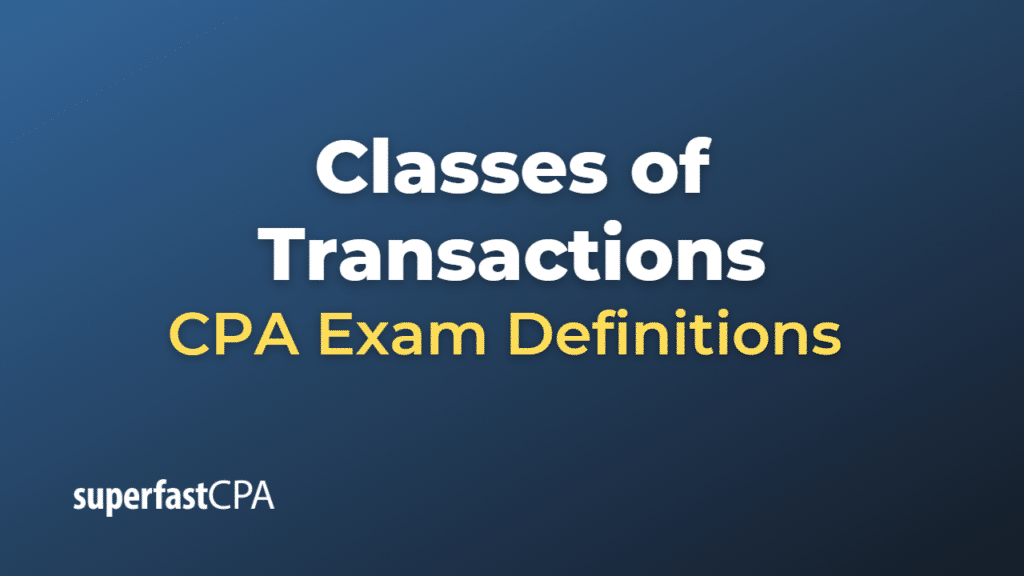Classes of Transactions
In a financial statement audit, “classes of transactions” refer to the various types of business activities that an organization undertakes, which result in the recording of financial data in the accounting records. These transaction classes represent different categories of financial events that have an impact on the organization’s financial statements. Identifying and understanding classes of transactions are crucial for auditors as they plan and execute the audit procedures to gather sufficient and appropriate audit evidence.
Examples of classes of transactions include:
- Sales and revenue transactions: These transactions relate to the organization’s primary revenue-generating activities, such as the sale of goods or the provision of services to customers.
- Purchases and expenses transactions: These transactions involve the acquisition of goods or services, resulting in the recording of expenses or costs, such as the purchase of raw materials, payment of employee salaries, or incurring utility expenses.
- Financing transactions: These transactions involve the organization’s activities to raise capital, either through issuing debt, such as bonds or loans, or equity, such as issuing shares.
- Investing transactions: These transactions involve the acquisition or disposal of long-term assets, such as property, plant, equipment, or investments in other entities.
- Cash and cash equivalents transactions: These transactions relate to the organization’s cash management activities, such as cash receipts, cash disbursements, and cash transfers between bank accounts.
In a financial statement audit, auditors assess the organization’s internal control environment, including controls over the recording, processing, and reporting of classes of transactions. They also perform substantive procedures, such as tests of details and analytical procedures, to verify the accuracy, completeness, and proper classification of transactions recorded in the financial statements. Understanding the classes of transactions helps auditors identify risks of material misstatements and design appropriate audit procedures to address those risks.












